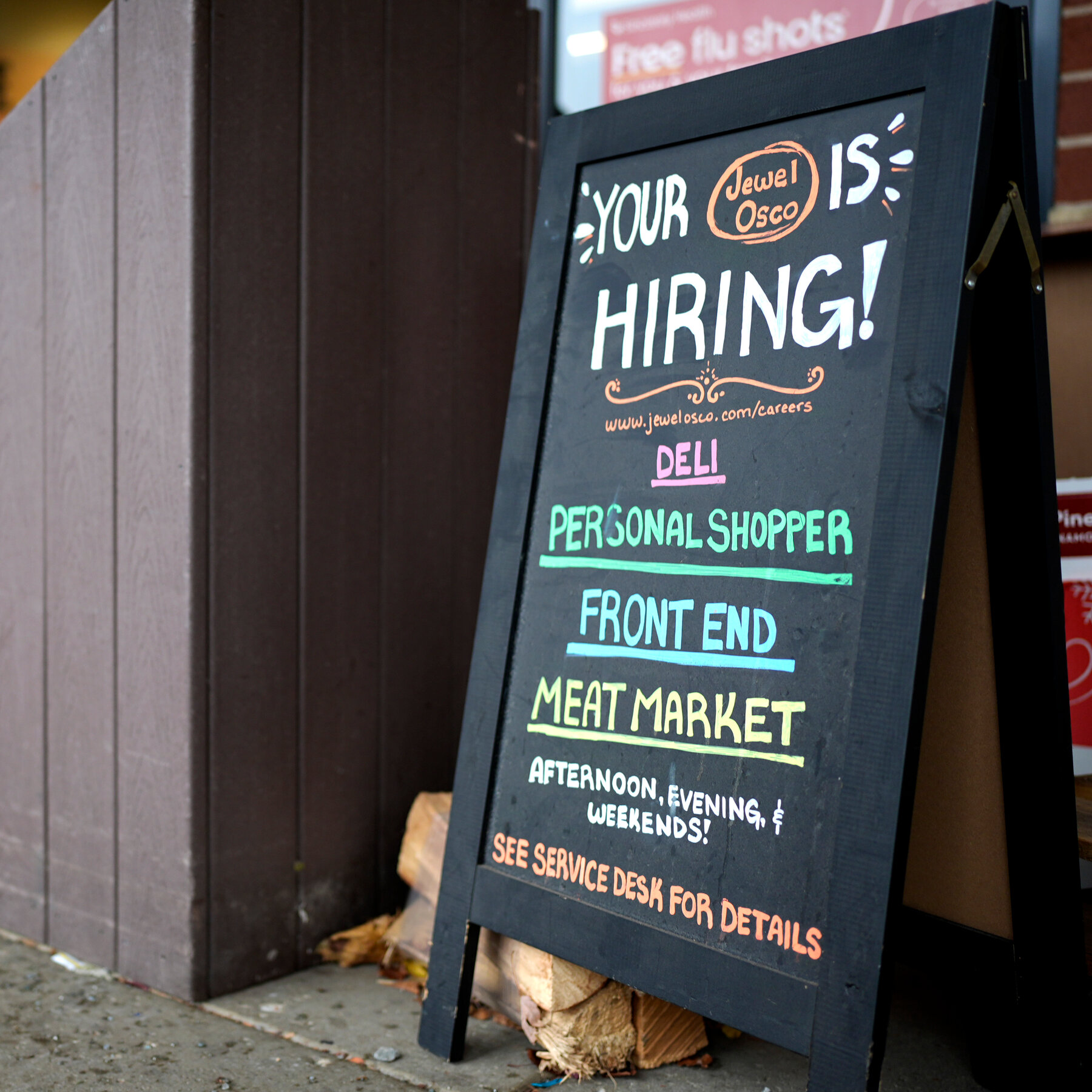January’s job gains were fewer than expected.
The pace of hiring slowed slightly in January, signaling more subdued employment growth even as joblessness remained low.
A total of 143,000 jobs were added, a showing that fell short of forecasts, the Labor Department reported on Friday. The unemployment rate edged down to 4 percent.
In addition, annual revisions created a picture of a slower-moving labor market in 2024 than had previously been estimated.
The fresh numbers suggest that the labor market may be losing momentum heading into the second administration of President Trump, whose policy agenda — including sharp cuts to federal payrolls and large-scale deportations of unauthorized migrants — could affect both employment and the availability of workers.
-
A slight deceleration: The revised monthly average for all of 2024 is 166,000 jobs, less than previously thought. With upward revisions to November and December, January looks like a step down.
-
Big wage gains: Average hourly earnings jumped 0.5 percent in January, and stand 4.1 percent higher than they were a year earlier. That was more than expected, and could reflect larger-than-usual end-of-year bonuses or cost-of-living adjustments going into effect.
-
Joblessness down: The unemployment rate had been bouncing between 4.1 percent and 4.2 percent for the previous seven months, so January was the lowest level since May 2024.
-
Usual suspects powering growth: As has been the case for the past year or so, health care, social assistance, retailing and government were the main sectors adding jobs in January. Mining and oil and gas extraction shed about 8,000 jobs, while other industries remained flat.
-
What they’re saying: “We have what I would describe as a robust but frozen labor market,” said Gregory Daco, chief economist at the accounting firm EY-Parthenon. “We have robust fundamentals and relatively moderate hiring, but it’s very judicious. The unemployment rate is historically low, but frozen in the sense that you’re not seeing much churn; businesses are being cautious as to how they manage their work force.”
-
Little bearing on the Fed: The Federal Reserve’s rate-setting committee doesn’t meet until next month, when it will have more data — including another jobs report — to help shape its decision on whether to resume cutting interest rates.
Speaking to Yahoo Finance on Friday, Austan Goolsbee, president of the Federal Reserve Bank of Chicago, sought to push back on worries over inflation expectations. Over a longer time horizon, which is the metric the central bank cares most about, Americans largely see inflation staying in line with the Fed’s 2 percent goal.
Expectations about future inflation jumped sharply, according to the latest reading of the University of Michigan’s survey of consumers on the one-year outlook. The report showed expected price increases of 4.3 percent over the coming year, compared with an earlier estimate of 3.3 percent.
That’s a big shift, and a worrying sign that consumers are already bracing for higher prices stemming from a possible trade war. The S&P 500 is now 0.4 percent lower for the day.
It’s worth noting that the University of Michigan says interviews for this survey concluded Feb. 4. That means they were mostly conducted before President Trump announced he was delaying implementation of the tariffs on Canada and Mexico.
Advertisement
SKIP ADVERTISEMENT
Fresh consumer sentiment data just released has eviscerated the modest rise in the stock market that had begun to take hold after the jobs report. The S&P 500 is now 0.2 percent lower for the day, having been up for the day a few minutes ago.
Government bond yields continued to drift higher, a sign that the latest jobs data is unlikely to prompt the Federal Reserve to lower interest rates again soon.
The White House press secretary, Karoline Leavitt, leaned into the narrative that job growth was weaker in 2024 that previously estimated. “Today’s jobs report reveals the Biden economy was far worse than anyone thought, and underscores the necessity of President Trump’s pro-growth policies,” she said in a statement
In fact, the benchmark revisions did not subtract as many jobs as had been expected, and the months at the end of 2024 were revised up substantially.
James Knightley, chief international economist at ING, has an interesting datapoint on the “quality” of the jobs being added. Initially, he noted that 78 percent of all U.S. jobs created since 2022 came from only a handful of sectors: government, leisure and hospitality and private education and healthcare. Following January’s revisions, that share has jumped to 88 percent. He adds, “We believe those three sectors tend to be lower paid, less secure and more part-time.”
Revisions show slower job growth but a still-solid labor market.
Job growth was weaker in 2023 and 2024 than initially reported, but the big annual revisions weren’t quite as bad as preliminary estimates had suggested.
The payroll numbers reported each month come from a survey of thousands of businesses and other employers. Once a year, the Labor Department revises those estimates to reconcile them with more accurate but less timely data from state unemployment insurance offices.
This year’s revision was unusually large. According to the updated data, employers added about 655,000 fewer jobs in 2023 and 2024 than previously estimated. It was the largest downward revision since 2009.
Still, the revision was smaller than expected: In August, the Labor Department released a preliminary estimate showing that the monthly surveys had overstated hiring by 818,000 jobs.
And while job growth was weaker than earlier estimates showed, the revisions did little to change the overall picture of a strong labor market. Employers added 2.6 million jobs in 2023 and two million in 2024. Over President Joseph R. Biden Jr.’s four years in office, the economy added more than 16 million jobs, although much of that came during his first two years as businesses reopened from the pandemic.
While the big picture changed little, the new data did reveal some more significant shifts beneath the surface. Job growth was faster in health care and government than previous reports showed, which is notable because those sectors already accounted for a disproportionate share of recent gains. Growth in retail work and temporary help services was revised sharply lower.
The new numbers also help resolve a mystery: The survey of employers had shown significantly stronger job gains in recent years than an alternative measure of employment based on a survey of households. But the combination of the downward revision to growth in the employer survey and a big upward adjustment to employment in the household survey — which was tied to new Census Bureau population estimates — largely closed the gap between the two measures.
Advertisement
SKIP ADVERTISEMENT
Education and health
+61,000 jobs
Retail
+34,300
Government
+32,000
Construction
+4,000
Manufacturing
+3,000
Leisure and hospitality
–3,000
Business services
–11,000
U.S. stock indexes nudged higher at the start of trading, though reaction to the jobs numbers among investors remains fairly muted. The S&P 500 began the day up roughly 0.1 percent, while the tech-heavy Nasdaq rose about 0.3 percent.
Taken with the revisions to average hourly earnings from prior months, the 4.1 percent year-over-year jump doesn’t look like an acceleration, but rather a slight dip from the 4.2 percent in October and November. Overall the picture is of consistently strong wage growth — and the fact that it’s been matched by impressive productivity growth means that it’s less of a concern for inflation.
Analysts have generally been saying that this report is neither so hot nor so cold as to shift the Fed, especially given the many weeks of data to go before its next meeting. “Overall, this was a positive report that means the Fed will remain in no hurry to resume its loosening cycle,” Stephen Brown, deputy chief North America economist at Capital Economics, wrote in a note.
Advertisement
SKIP ADVERTISEMENT
Investors will now shift their focus to next week’s Consumer Price Index inflation report, another key data point in the Fed’s interest rate calculus, said Glen Smith, chief investment officer at GDS Wealth Management. “The stock market is closing in on record highs, even with worries about tariffs, artificial intelligence, big cap tech’s prospects and uncertainty about the Federal Reserve,” he said.
Forecasts for inflation have bounced around a lot due to uncertainty about the Trump administration’s policies. This week, tariffs on Mexico and Canada were imminent before being abruptly delayed. If levies like that are actually put in place for an extended period, that could impact inflation. Most economists expect this to result in a one-off increase in prices, but because inflation is still higher than where the Fed wants it to be and Americans are on edge about higher prices in general, the fear is that these policies could rekindle inflationary pressures.
Factoring in all the revisions, the U.S. added about 16.2 million jobs during President Biden’s four years in office. Much of that came early in his term, as the economy emerged from the pandemic. But employers added 2.6 million jobs in 2023 and 2 million in 2024.
Adding to the picture of a labor market that is tightening even as it slows down, a more expansive measure of underemployment — which includes people working part time because they can’t find full-time jobs — remained at 7.5 percent down from 7.7 percent last fall.
The average work week dropped to a low point not seen since March 2020, at 34.1 hours. Although the release said that there was no impact from harsh weather and wild fires, analysts had expected that they might have shown up in reduced hours.
Advertisement
SKIP ADVERTISEMENT
Neel Kashkari, president of the Federal Reserve Bank of Minneapolis, told CNBC that he still considered the labor market good and the economy strong.
The labor force participation rate for people in their prime working years — between the ages of 25 and 54 — edged up to 83.5 percent, driven entirely by a jump among men. Their participation rate had been falling from a cycle high of 89.9 percent last July, and now stands at 89.4 percent.
The release says that wildfires in Los Angeles and winter storms in much of the rest of the country had “no discernible effect” on the numbers. Most forecasters had expected a drag of about 20,000 jobs — which may become more evident when state-level numbers are released in a few weeks.
“TLDR: we think the Fed is likely to be cautious about reading too much into today’s report,” said Lindsay Rosner, head of multi-sector fixed income investing at Goldman Sachs Asset Management.
Advertisement
SKIP ADVERTISEMENT
The big wildcard for the labor market is what happens on the immigration front. Trump has begun to deport migrants, but not yet at the scale he pledged on the campaign trail. If net immigration flatlines or turns negative, economists expect some combination of slower employment growth, higher wages and a lower unemployment rate. The debate is whether the larger hit will come in the form of lower growth or higher inflationary pressures.
Wages popped, with average hourly earnings jumping 0.5 percent in January. That puts the number at 4.1 percent higher over the past year.
There had been some speculation that, as part of the big annual revisions process, the weak job gain last October (when storms and strikes disrupted the job market) would be revised to show a small decline. That would have broken President Biden’s streak of steady job growth. But in the end, October’s growth was revised up slightly, to 44,000 jobs.
The dollar, which had been rising before the numbers were released, continued its ascent, buffeted by a small rise in bond yields. Higher bond yields lure investors to the U.S., and in turn strengthens the dollar as well. Stocks remain flat for the day.
Advertisement
SKIP ADVERTISEMENT
The consensus across former policymakers and economists who closely follow the Fed is that it would take a very significant deterioration in the labor market for the central bank to change course at this point. That would look like monthly jobs growth consistently coming in below 100,000 positions or the unemployment rate rising sharply. Right now, we are not seeing anything close to that.
Advertisement
SKIP ADVERTISEMENT
Advertisement
SKIP ADVERTISEMENT




